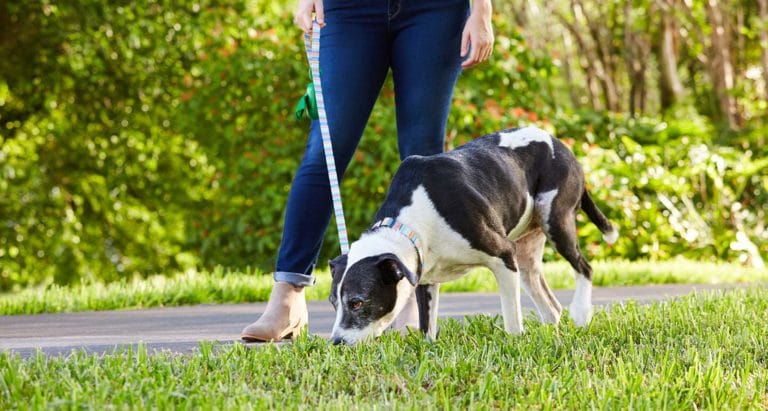You’d be hard-pressed to find someone who has never heard of cat litter. But what about dog litter? You might’ve thought cats were the only ones with the privilege of using a box to do their business. But thanks to the advent of dog litter—and dog litter boxes—canines can take advantage of this convenience, too. So, if dog pee pads are not working for your pup, consider using a dog litter box with some dog litter instead. We’ll explain how, but first, let’s dive into what, exactly, dog litter is.
What Is Dog Litter?
While most cat litters are made from clay, dog litters typically are made from paper, like Frisco Paper Pellet Dog Litter, or wood.
“Dog litters have a unique texture and smell, so dogs will not get confused with any other surfaces in your home,” says Jennifer Mauger, CPDT-KSA, owner of L’Chaim Canine in Akron, Ohio.
Dog litter and a dog litter box can be used as an alternative to dog pee pads, according to Mauger. Although dog pee pads, also called dog potty pads, work well for some homes, the texture can be confusing for dogs, unlike a dog litter pan filled with dog litter.
“Although puppy pads are soft and absorbent, some puppies and dogs will also equate their feel with towels and throw rugs and have accidents on those fabrics,” Mauger says.
Why Use Dog Litter?
Convenience is a big reason for using dog litter. By leaving out a dog litter pan filled with dog litter, you can relax knowing your dog has a place to relieve himself if the urge strikes.
In fact, dog litter can be a good option for pet parents who are gone much of the day, says Irith Bloom, CPDT-KSA, CDBC, director of training at The Sophisticated Dog in Los Angeles, California.
“The person may be out of the home for many hours in a row,” Bloom says. “Giving a dog an indoor potty option can be helpful if the dog has to wait six hours or more between potty breaks.”
Your dog using a litter box can be an alternative to taking him outside to relieve himself when it may not be convenient to do so.
“People may not be able to walk their dog very late at night or early in the morning, so the dog has to basically ‘cross his legs and hold it’ for many hours in a row overnight,” Bloom says. “An indoor potty option can help with that, too.”
A dog litter box also provides a good option for people who find it difficult to take their dog outside frequently.
“People who live in high-rises or have a disability that limits their mobility may find it easier to let the dog do some of his or her pottying indoors—though walks should always be a part of a dog’s life,” Bloom says.
Litter Box Training a Dog
If you think a dog litter box might be a good option for your pooch, you’ll need to put in some work to help him understand what you expect of him. Bloom recommends teaching a dog to use a litter box the same way you would in normal potty training; but instead of taking him outdoors, take the dog to the box during potty times.
“It can help to put a piece of poop or some urine-soaked paper in the litter box to let the dog know this is a toilet,” Bloom says.
Make sure you choose a litter box that is large enough for your pup. The Puppy Pan, for example, comes in two sizes: small (20 x 15 inches and recommended for pets up 6 pounds) and large (24 x 20 inches and recommended for pets up to 20 pounds).
“Choose a box that the dog can easily turn around in since dogs often like to circle before they potty,” Bloom says.
And don’t forget to reward for good behavior.
“Praise the dog for pottying in the litter box, and feed the dog a treat when he or she is finished pottying,” Bloom says.
As with all housetraining, Bloom adds, the keys to litter box training a dog is making sure he gets taken to the right place often and, when he relieves himself in the right area, giving him plenty of praise and treats.
It’s worth noting that litter box training may not be ideal for all dogs. Litter box training a dog may be more appropriate for smaller dogs than larger breeds, according to Bloom.
“For one thing, smaller dogs can manage with a smaller box,” Bloom says. “You’d need a pretty massive litter box, and very large amounts of litter, for a Great Dane!
“Also, larger dogs produce more pee and poop than smaller dogs,” she continues “This makes it harder to contain the waste to a litter box in some cases. Finally, if you have a dog who likes to hike his leg up to pee, a litter box may not be tall enough to contain the stream.”
For a larger dog, or any dog really, you can look into hiring a dog walker for the times of day that you are unable to take your dog out yourself.
More about potty training:
Share:











